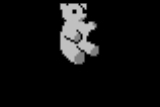
Jdbgmgr.exe virus hoax
Encyclopedia
The jdbgmgr.exe virus hoax
involved an e-mail spam
in 2002 that advised computer users to delete a file named jdbgmgr.exe because it was a computer virus
. jdbgmgr.exe, which had a little teddy bear
-like icon (The Microsoft Bear), was actually a valid Microsoft Windows file, the Debugger Registrar for Java (also known as Java Debug Manager, hence jdbgmgr).
The email has taken many forms, including saying its purpose was to warn Hotmail
users of a virus spreading via MSN Messenger, or to alert about a possible virus in the orkut
web community. All say that it was not detected by McAfee
or Norton AntiVirus
, which is obviously true. A further variant related the file with the "Bugbear" virus, which was a genuine virus, prevalent at the time.
The effect of deleting the file was restricted to Java
developers who used Microsoft Visual J++ v1.1.
Virus hoax
A computer virus hoax is a message warning the recipient of a non-existent computer virus threat. The message is usually a chain e-mail that tells the recipient to forward it to everyone they know.-Identification:...
involved an e-mail spam
E-mail spam
Email spam, also known as junk email or unsolicited bulk email , is a subset of spam that involves nearly identical messages sent to numerous recipients by email. Definitions of spam usually include the aspects that email is unsolicited and sent in bulk. One subset of UBE is UCE...
in 2002 that advised computer users to delete a file named jdbgmgr.exe because it was a computer virus
Computer virus
A computer virus is a computer program that can replicate itself and spread from one computer to another. The term "virus" is also commonly but erroneously used to refer to other types of malware, including but not limited to adware and spyware programs that do not have the reproductive ability...
. jdbgmgr.exe, which had a little teddy bear
Teddy bear
The teddy bear is a stuffed toy bear. They are usually stuffed with soft, white cotton and have smooth and soft fur. It is an enduring form of a stuffed animal in many countries, often serving the purpose of entertaining children. In recent times, some teddy bears have become collector's items...
-like icon (The Microsoft Bear), was actually a valid Microsoft Windows file, the Debugger Registrar for Java (also known as Java Debug Manager, hence jdbgmgr).
The email has taken many forms, including saying its purpose was to warn Hotmail
Hotmail
Windows Live Hotmail, formerly known as MSN Hotmail and commonly referred to simply as Hotmail, is a free web-based email service operated by Microsoft as part of its Windows Live group. It was founded by Sabeer Bhatia and Jack Smith and launched in July 1996 as "HoTMaiL". It was one of the first...
users of a virus spreading via MSN Messenger, or to alert about a possible virus in the orkut
Orkut
Orkut is a social networking website that is owned and operated by Google Inc. The service is designed to help users meet new and old friends and maintain existing relationships...
web community. All say that it was not detected by McAfee
McAfee
McAfee, Inc. is a computer security company headquartered in Santa Clara, California, USA. It markets software and services to home users, businesses and the public sector. On August 19, 2010, electronics company Intel agreed to purchase McAfee for $7.68 billion...
or Norton AntiVirus
Norton AntiVirus
Norton AntiVirus, developed and distributed by Symantec Corporation, provides malware prevention and removal during a subscription period. It uses signatures and heuristics to identify viruses. Other features include e-mail spam filtering and phishing protection.Symantec distributes the product as...
, which is obviously true. A further variant related the file with the "Bugbear" virus, which was a genuine virus, prevalent at the time.
The effect of deleting the file was restricted to Java
Java (programming language)
Java is a programming language originally developed by James Gosling at Sun Microsystems and released in 1995 as a core component of Sun Microsystems' Java platform. The language derives much of its syntax from C and C++ but has a simpler object model and fewer low-level facilities...
developers who used Microsoft Visual J++ v1.1.

